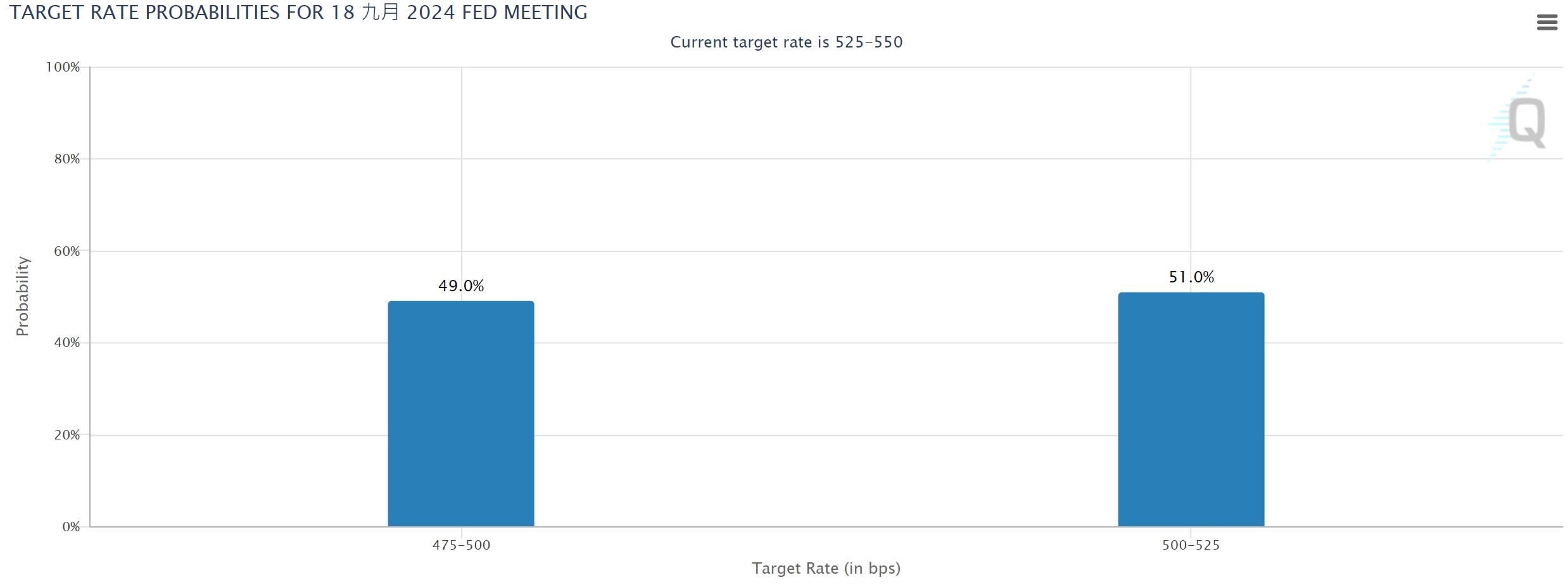The market 's doubts about the U.S. economic recession linger, but the Morgan Stanley research team continued to insist on its view in a report released on Monday: it believes that the U.S. economy will achieve a soft landing as inflation levels continue to decline, which will stimulate the Federal Reserve Rate cuts will begin at the upcoming September decision-making meeting:
Our economists' base case for a soft landing for a resilient economy remains unchanged, and they expect continued declines in inflation to fuel a rate-cutting cycle, starting with the September FOMC meeting, with three quarter-point (1-yard) cuts in 2024. of interest rate cuts.
However, the market will likely continue to challenge the soft landing view (that the U.S. economy continues to slow down but does not collapse) until some good data emerges.
The data that all investors will be paying attention to this week is the latest July US Consumer Price Index (CPI) data, which will be released at 20:30 on the 14th, Taiwan time. If the CPI data is consistent with market expectations or falls further, it will support expected interest rate cuts. The basic argument is that if the CPI data is higher than expected, it will indicate that inflation has risen significantly, which may hinder the Federal Reserve's interest rate cut plan.
Poor CPI in July will reignite concerns about stagnant inflation
It is worth noting that Bank of America Global Research said that July CPI will be a major test for the market. The market has just emerged from a sharp decline caused by concerns about economic recession. If disappointing data emerges, the market will intensify its decline. .
Bank of America predicts that overall and core CPI will increase by 0.25% and 0.22% quarterly and 3.0% and 3.3% annually in July respectively. Analyst Ohsung Kwon said in a report on the 11th:
Weak CPI could lead to a mitigating rebound, but overheating CPI would be a major downside event and could return the market to concerns about stagnant inflation.
To the market, hotter CPI will be more surprising than softer CPI.
However, in Ohsung Kwon’s view, concerns about a hard landing of the U.S. economy are exaggerated. The possibility that the Federal Reserve will need to significantly cut interest rates or make an emergency interest rate cut between policy meetings is very low. Despite this, the stock market still needs the support of the Federal Reserve. Until the next strong macro data or Huida’s brilliant financial report is released:
What the market lacks is recognition from the Federal Reserve and restoration of confidence in economic growth.
Bank of America expects the Federal Reserve to cut interest rates by 25 basis points at its September and December meetings.
Chances of rate cut in September
CME Group’s FedWatch tool estimates that there is a 49% chance that the Federal Reserve will cut interest rates by 2% to 4.75% to 5% in September, and a 51% chance of cutting interest rates by 1% to 5% to 5.25%. In addition, the Fed will cut interest rates by 11% The probability of a cumulative 2-digit interest rate cut per month is 35.6%, the probability of a cumulative 3-digit interest rate cut is 49.3%, and the probability of a cumulative 4-digit interest rate cut is 15.1%.






